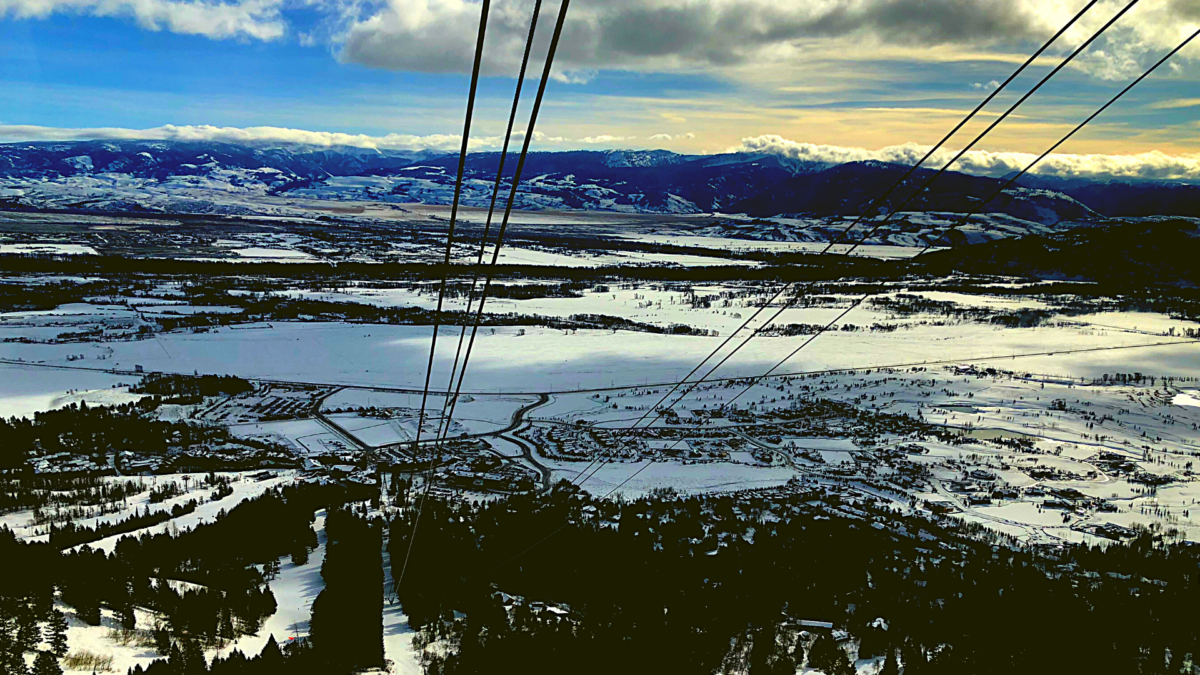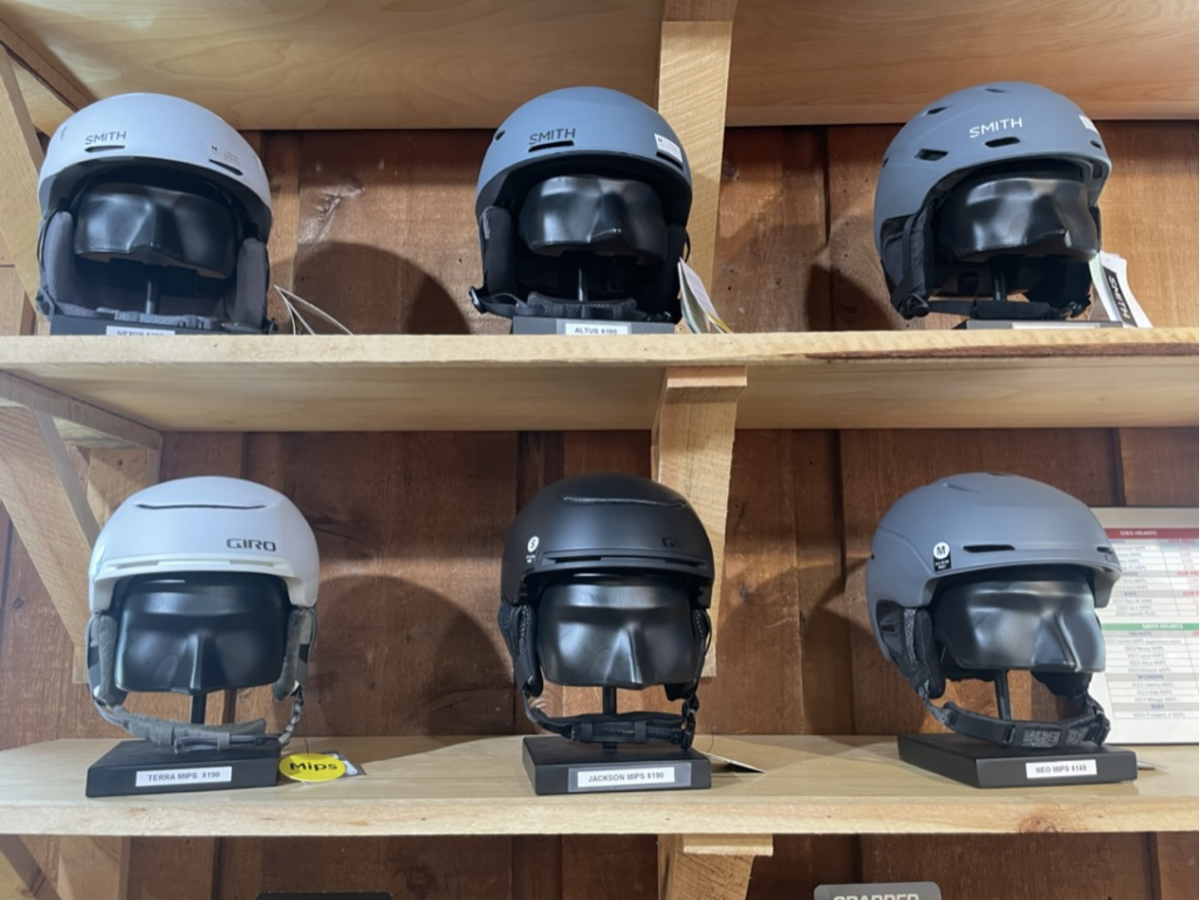Whipping down the slopes on his skis, 8-year-old Max Glazer felt safe and protected. Wearing his POC helmet, nothing could stop him. When he hit a bump and flipped over, however, he hit his head. Everyone thought he was fine. He was wearing a helmet, of course. The ski patrol told him to ski down to the bottom of the slope. Nevertheless, a wave of lightheadedness rushed over him. And when he started throwing up an hour or two later, his family rushed him to the hospital. They found out he had a concussion and, sadly, couldn’t ski for the rest of the trip. Just like Max’s concussion, head injuries due to skiing are quite common; they make up about 20% of the yearly 600,000 skiing and snowboarding injuries in the United States. But, have helmets helped the matter and decreased the number of head injuries over time? Let’s go back to the 1920s to see what headwear looked like then.
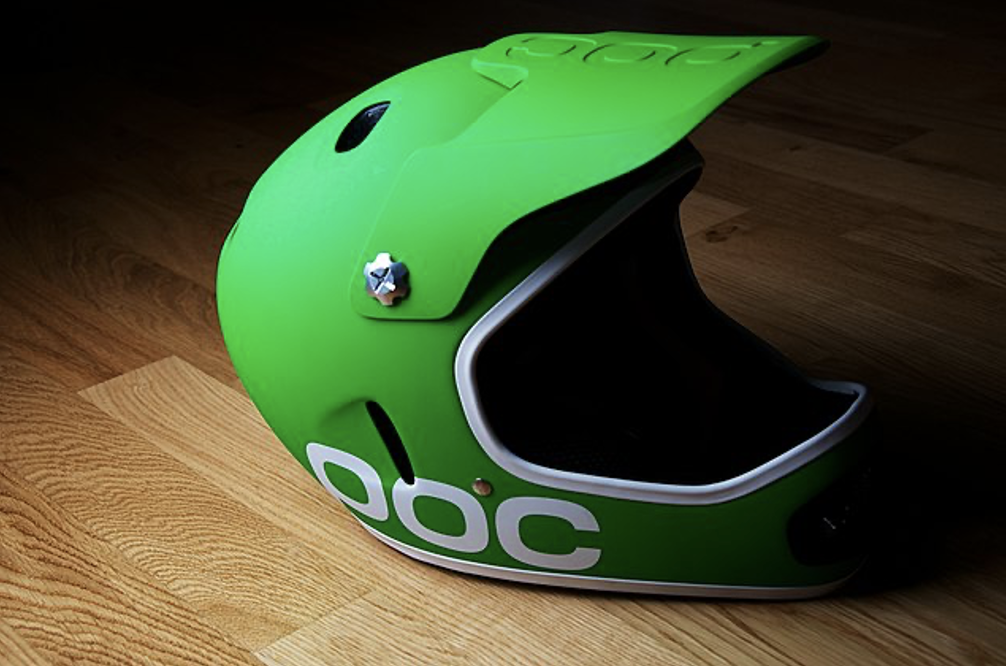
Stylish Ski Hats
When we picture a skier today, most of us imagine a brightly colored helmet on the top of their head. However, hats used to be the only thing adorning skiers’ heads until very recently. In the 1920s, cloche hats were all the rage. Heading into the 1930s, men and women wore German feathered hats. By the 1940s, people sported bonnets, head scarves, and visors. While these were all very fashionable for their respective times, there was no head protection or safety to be found. Through the 1950s and 1960s, people often wore no hats at all, instead donning sunglasses or other fashionable items. The main reason many people don’t wear helmets while skiing or snowboarding is a personal choice. Some individuals just don’t like the way it looks, so they choose not to wear helmets. Some people believe that wearing a helmet might impair their vision and hearing. Others think wearing a helmet gives them a false sense of security, leading them to take greater risks and injuring themselves further. In an article titled “Hats vs. Helmets,” Cari Kaplan, who works at the Snowmass Ski Patrol, explains that some doctors think “the helmet is kind of a safety net that gets people to go faster and more out of control than they normally would.” Nevertheless, by the early 1990s into the 2000s, helmets became much more popular to see on ski slopes.
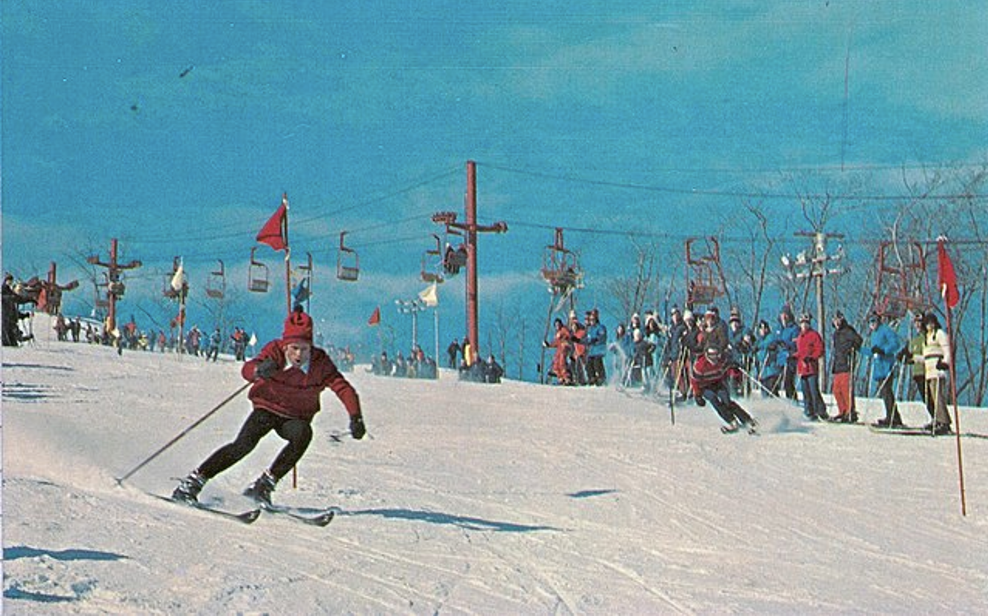
Headstrong on the Slopes: The Increase of Helmet Use
Beanies and other hats were mostly dropped by the 2000s. As helmet use skyrocketed, severe head injuries were reported less often on the slopes. According to the International Skiing History Association, from 1995 to 2010, helmet use increased from 5% to 76%. During that time, the rate of serious head injuries dropped by 65%. Mandatory helmet use for children up to 17 years old was first advocated in 1983, but it was only implemented much more recently and only in certain areas.
Furthermore, helmet use among adults did not become common until the 2010s. In the 2002-2003 season, 25% of all skiers wore helmets. But, during the 2021-2022 ski season, 90% of skiers and snowboarders wore helmets. According to Seth Masia in an article titled “Ski Helmets: How We Got Here,” retail sales of ski helmets total 1.5 million helmets every single winter. In addition, the helmet market is growing at 5% annually. This is a significant change from when helmets were rarely worn, if at all. While ski helmet use is not compulsory everywhere, there are some instances when wearing a helmet is required. In Slovenia, Italy, and Austria, all skiers under the age of 18 must wear helmets. New Jersey is the only state in the United States that mandates that skiers under 18 wear a ski helmet. In Nova Scotia, all skiers, regardless of age or ability, must wear helmets while skiing. In addition, any ski resort under the ownership of Vail Resorts requires minors and certain employees to wear helmets while on the slopes.
Why Has Helmet Use Increased Throughout the Years?
In 1997 and 1998, the tragic deaths of Michael Kennedy and Sonny Bono, just six days apart, prompted many people to buy and start wearing helmets. On December 31, 1997, Michael Kennedy, the son of Robert F. Kennedy, was playing football on skis in Aspen with a few family members. Wearing no safety equipment, Kennedy hit a tree and died. Then, on January 5, 1998, California lawmaker and US congressman Sonny Bono was skiing at Heavenly Ski Resort in California when he skied into a wooded area and hit a tree. Bono was also not wearing a helmet and died from massive head injuries. In 2009, the death of actress Natasha Richardson once again spiked helmet use and brought awareness and attention to the issue. According to a Johns Hopkins Medicine article titled “Helmets Save Lives of Skiers and Snowboarders,” Richardson was not wearing a helmet. She “hit her head when she fell backward at a low speed while on a beginner’s ‘bunny’ slope, and wearing a helmet would have prevented lethal head injury.” A vast increase in ski helmet use resulted from these three high-profile deaths.
An improvement in technology also motivated many individuals to start wearing helmets. Ski helmets have become more comfortable, lighter, and more durable over the years. The development of new materials, such as carbon fiber, has allowed manufacturers to produce helmets that provide better protection while still being comfortable to wear. Changes in cultural attitudes towards safety have also played a role in the rise of ski helmet use. In the past, skiing and snowboarding were less mainstream, so safety was discussed less for these two sports. But, the cultural shift to talking about safety has made it more socially acceptable to wear a helmet, and many people now view it as a necessary part of skiing and snowboarding.

Bumps to Brain Damage: What Are the Different Types of Head Injuries?
Before we get into whether helmets even prevent head injuries, first let me turn your attention to the different kinds of head injuries and their varying magnitudes. First, in the category of mild physical traumas are scalp lacerations or contusions: in non-medical terms, cuts and bruises. Going up the scale of damage, next up is concussions. The American Association of Neurological Surgeons describes concussions as “brain injuries that traumatically induce alterations of mental status. A concussion may result from shaking the brain within the skull.” While concussions cause damage, the impairment of neurological function is short-lived and resolves reasonably quickly compared to other types of head injuries. The next type of head injury is a traumatic brain injury. The AANS describes a TBI as resulting “from a blow or jolt to the head or a penetrating head injury that disrupts the normal function of the brain.” Symptoms of traumatic brain injuries can include pain, motor dysfunction, sensory changes, agitation, confusion, a shortened attention span, difficulty with speech, and dysarthric or slurred speech. The last and most severe type of head injury that can result from a ski accident is a coma. Comas are “profound or deep state[s] of unconsciousness. An individual in a coma is alive but unable to respond to his or her environment.” Now that we understand the types of brain injuries, let’s see which types of injuries wearing a helmet can prevent.
Does Wearing a Helmet Prevent Injury?
In a 2008 study called “Injuries of the Head, Face, and Neck in Relation to Ski Helmet Use,” from the journal Epidemiology, the authors looked at ski patrol injury reports from 2000-2005. They determined that “helmets may provide some protection from head injury among skiers and snowboarders involved in falls or collisions.” They found that skiers who crashed or fell had a 15% reduction in head injury risk when wearing a helmet. In a 2016 British Journal of Sports Medicine study, however, researchers found that wearing a helmet can reduce the risk of serious head injury by 60%. Clearly, when looking at serious head injury prevention, the percentage of risk reduction skyrockets. Ski helmets are designed to absorb the impact of a fall or collision and distribute the impact’s force across the entire helmet. They are also designed to stay in place during a fall, which helps to protect the head from rotational forces that can cause brain injuries. The same study shows that from 2002 to 2010, there was a 13.1% relative reduction in the proportion of head injuries. During the same decade, helmet use increased substantially among injured skiers and snowboarders, from 23.8% in 2002 to 68.1% in 2010. While there was a decrease in injuries with the increase in helmet use, it was much less than expected. This could be because recent decades have seen dramatic changes in skiing equipment, with new possibilities for extreme acrobatic ski moves, with an increased risk of injury. In addition, ski parks have developed dramatically, adding high jumps and other obstacles that increase the risk of severe injuries from high-impact crashes.
While the decrease in head injuries was not as significant as experts believed it would be, doctors still highly value helmets today and recommend that all skiers and snowboarders wear them. Bill Rodman, a trauma surgeon at Aspen Valley Hospital, explains that “while a helmet will not prevent an injury, it will bring it down a notch or two…It certainly downgrades it and improves the patient’s outcome.” Rodman clarifies that “brain damage could be reduced to a concussion, and a bad concussion could downgrade to a minor headache” when skiers wear helmets. A 2011 Sports Performance Research Institute New Zealand study found that helmets reduce head injuries such as abrasions, lacerations, and mild concussions. Not only can helmets downgrade major injuries to minor injuries, but they can prevent minor injuries altogether. The same study also found that helmet use in “icy snow conditions was estimated to reduce the probability of a skull fracture and severe brain injury from approximately 80% to 20%.” The study found that head injuries tend to increase when the snowpack is hard and icy. The positive is that wearing a helmet in these conditions leads to a decrease in head injuries. Helmet use can downgrade an injury, so what could the harm be of wearing one?
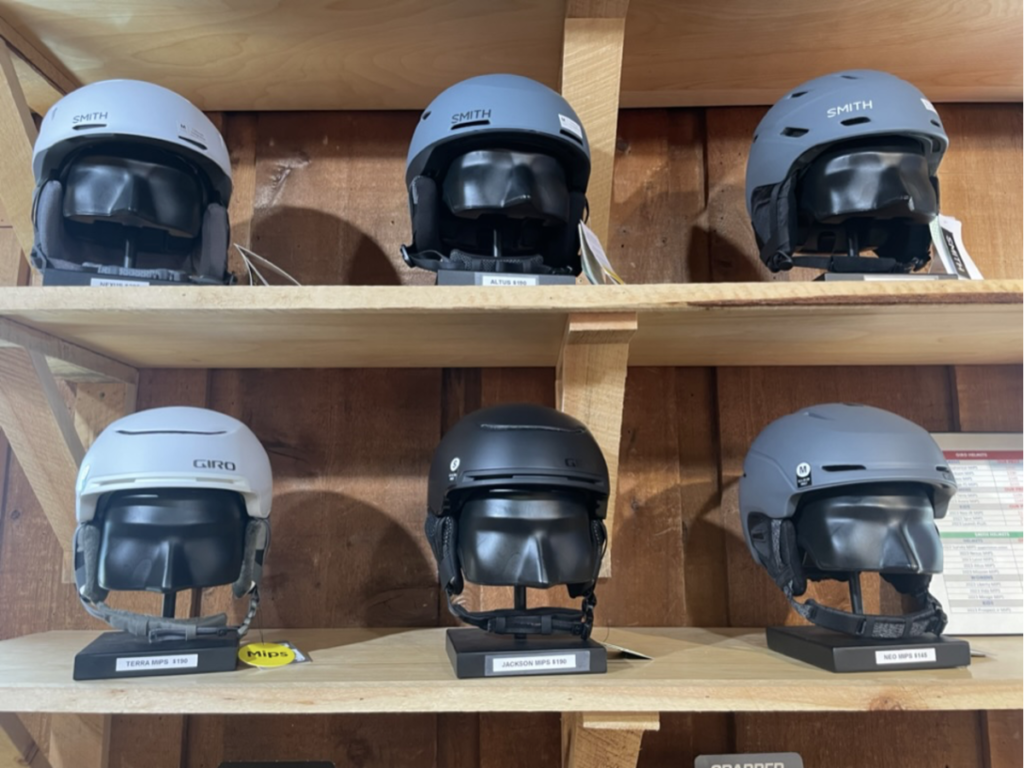
Crash Course on Ski Helmet Cons
Ski helmets may help prevent some injuries, but they definitely do not prevent all. The Micheli Center for Sports Injury Prevention, located in Massachusetts, did extensive research on concussions in skiing and snowboarding. Their report found that ski helmets are not made to prevent concussions but to avoid more catastrophic injuries, such as skull fractures or brain bleeds. Data from their research shows no difference in concussion frequency between individuals who were and were not wearing helmets at the time of their ski/snowboard injury. This explains why so many skiers, even those wearing helmets, have concussions. According to a study by The Journal of Trauma in 2002, skier-tree collision is the most common mechanism for head injuries. Because of this high-speed, high-impact cause of injury, it is almost impossible to prevent concussions, even with the most protective helmets on the market. Helmets successfully prevent brain injuries with low Glasgow Coma Scale Scores, which are the most severe type and can be life-threatening.
Over time, physicians’ views on helmet use have changed. Initially, as helmet use increased, physicians were all for it. Physicians and doctors believed that having a hard covering over the head would prevent injury if one were to hit their head. As more research was done, however, physicians’ opinions changed. While all physicians still endorse helmet use because there is no harm in extra protection, research has shown something different. In 2019, trauma surgeons at Dartmouth-Hitchcock Medical Center conducted a study examining the effect of wearing a helmet. Dr. Eleah Porter and Dr. Andrew Crockett, two of the study’s authors, explain that “helmets do protect against some injuries, which is great. They protect against skull fractures and cervical spine injuries. But at the same time they have limitations.”
The main limitation turns out to be one of the concerns of skiers that led them not to wear helmets in the 1990s and early 2000s: having a false sense of security. Dr. Porter says that helmeted patients “were more likely getting into high energy impacts. So, specifically, they were more likely to hit a tree, they were more likely to fall from great heights as compared to unhelmeted patients. Perhaps patients who are getting into these major traumas and ending up in our center who are helmeted, perhaps they have a false sense of security when they’re wearing a helmet and they’re skiing more recklessly or outside of their capabilities.” And reckless skiing and more extreme tricks lead to faster and more intense crashes. The study from the Sports Performance Research Institute New Zealand mentioned earlier explains that protection by helmet wear declines over 300 g’s, a measure of the force of an impact. So, when skiers get into high-energy crashes like they are when they have the false sense of security of a helmet, that helmet actually does not do much to prevent injury.
While doctors still advocate for helmets today, they understand that there are some disadvantages and that they don’t prevent all kinds of injuries like skiers and snowboarders may think they do, which can lead to worse injuries: the opposite effect that helmets should be having.
Conclusion
In the 1990s, it was uncommon to see skiers and snowboarders wearing helmets on the spikes. On the other hand, today, helmets are a ubiquitous sight on ski hills worldwide. While ski helmets cannot completely eliminate the risk of head injury, they can significantly reduce the severity of injuries and even save lives. The increase in helmet use from the 1990s to today has caused a decrease in the number of severe head injuries for skiers. Physicians, however, have gone from eager about helmets to a bit more skeptical, as research has shown that ski helmets often don’t prevent injuries, especially concussions.
Even though he got a concussion while wearing a helmet, Max Glazer still wants to remind all skiers to “wear a helmet. If [he] didn’t, things could have been much worse.” It is worth noting that helmets should not be viewed as a substitute for good skiing techniques and safe skiing practices. Skiers should always ski within their ability level, be aware of their surroundings, and follow the rules of the ski resort. However, wearing a helmet is an essential additional measure that skiers can take to protect themselves in the event of a fall or collision. While there is no clear consensus on exactly what percentage a helmet reduces an injury or if it reduces an injury at all for certain types of skiers, one thing is clear: there is no downside to wearing a helmet. You are better safe than sorry.
Bibliography
Benson, Steve. “Hats vs. Helmets.” AspenTimes.com, AspenTimes.com, 10 Feb. 2004, https://www.aspentimes.com/news/hats-vs-helmets-2/.
Costa-Scorse, Brenda, and Patria Hume. “Head Injury Prevention in Alpine Skiing and Snowboarding.” Sports Performance Research Institute New Zealand, 15 Feb. 2011, https://orapp.aut.ac.nz/bitstream/handle/10292/3214/CostaScorse%202011%20Head%20IP%20alpine%20ski%20snowboard%20TR%20Coroners%2015%20February%202011a.pdf?sequence=2&isAllowed=y.
Ellison, Arthur, et al. “Skiing Injuries: Clinical Study.” Public Health Reports (1896-1970), no. 11 (1962): 985-991. https://doi.org/10.2307/4591681.
Goulet, Claude, et al. “Risk Factors Associated with Serious Ski Patrol-Reported Injuries Sustained by Skiers and Snowboarders in Snow-Parks and on Other Slopes.” Canadian Journal of Public Health, no. 18 (2012): 402-406. https://pubmed.ncbi.nlm.nih.gov/17985684/.
“Helmets Save Lives of Skiers and Snowboarders.” Johns Hopkins Medicine, Based in Baltimore, Maryland, 12 Nov. 2012, https://www.hopkinsmedicine.org/news/media/releases/helmets_save_lives_of_skiers_and_snowboarders.
Kenver Team. “Is It Compulsory To Wear Ski Helmets? If Not, Should You?” Kenver, Kenver, 20 Oct. 2022, https://kenver.com/blogs/news/compulsory-ski-helmets.
Levy, A. Stewart, et al. “An Analysis of Head Injuries among Skiers and Snowboarders.” The Journal of Trauma: Injury, Infection, and Critical Care, no. 4 (2002): 695–704. https://doi.org/10.1097/00005373-200210000-00013.
Masia, Seth. “Ski Helmets: How We Got Here.” International Skiing History Association, https://www.skiinghistory.org/history/ski-helmets-how-we-got-here.
Mueller, Beth A., et al. “Injuries of the Head, Face, and Neck in Relation to Ski Helmet Use.” Epidemiology, vol. 19, no. 2, 2008, pp. 270–276., JSTOR, http://www.jstor.org/stable/20486536.
Oh, Sooyoung. Prevention of Head Injuries in Skiing: Mechanisms, Experimental Study, and Prevention. Basel, Switzerland; New York: Karger, 1985.
Oldham, Jessie. “Heads Up Before Hitting the Slopes: Concussion Research in Skiing and Snowboarding.” The Micheli Center, The Micheli Center, 9 Nov. 2020, https://www.themichelicenter.com/post/heads-up-before-the-slopes#:~:text=Head%20injuries%20account%20for%20up,injures%20in%20the%20United%20States.
“Ski and Snowboard Helmets: To Wear or Not to Wear One.” Winter Sports Company, 26 Jan. 2023, https://www.wintersportscompany.com/ski-and-snowboard-helmets/.
“Sonny Bono Killed in Skiing Accident.” History.com, https://www.history.com/this-day-in-history/sonny-bono-killed-in-skiing-accident.
SportsDocSam, director. The Most Common Skiing and Snowboarding Injuries and How to Prevent Them. YouTube, YouTube, 6 Feb. 2022, https://www.youtube.com/watch?v=WAal4-lB5dU. Accessed 24 Mar. 2023.
“Sports-Related Head Injury.” American Association of Neurological Surgeons, https://www.aans.org/Patients/Neurosurgical-Conditions-and-Treatments/Sports-related-Head-Injury.
Sulheim, Steinar, et al. “Helmet Use and Risk of Head Injuries in Alpine Skiers and Snowboarders: Changes after an Interval of One Decade.” British Journal of Sports Medicine (2017): 44-50. https://bjsm.bmj.com/content/51/1/44.
UnofficialNetworks. “7 Surprising Facts About Ski Deaths & Injuries.” Unofficial Networks, 26 Mar. 2017, https://unofficialnetworks.com/2017/03/26/7-surprising-facts-ski-deaths-injuries/#:~:text=Estimates%20are%20that%20about%20two,percent%20since%20the%20mid%2D1970s.
Wertlieb, Mitch. “Dartmouth-Hitchcock Study Finds Ski Helmets Don’t Prevent Severe Head Injuries.” Vermont Public, 22 Jan. 2020, https://www.vermontpublic.org/vpr-news/2020-01-14/dartmouth-hitchcock-study-finds-ski-helmets-dont-prevent-severe-head-injuries.
